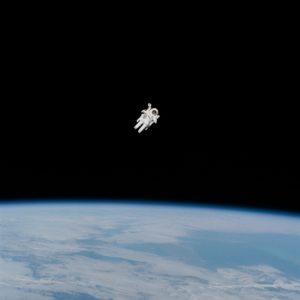Why I’m Still a Young-Earth Creationist, Even Though It’s Getting Increasingly Lonely over Here
As noted in the last post, I’m starting with the demonstrated premise that the Bible is a supernatural book—the Word of God—and therefore authoritative. Further, it should be interpreted based on genre, like any other literature. In narratives, it should be read at face value unless the text itself give us reason to do otherwise. And once we’ve extracted its meaning, we shouldn’t torque it around unless we have a stronger reason to do so than “a whole bunch of people believe something else, and they’ll make fun of me if I don’t come around.”
It makes sense, then, to start our investigation into the age of the earth by taking a look at what the Bible actually says about the topic.
To begin with, the Creation narrative and the genealogies of the human race are clearly narrative, not poetry, as old-earth proponents used to suggest. The clearest indication of this is the style of the text itself; perhaps the most reliable predictor of Hebrew narrative is the waw consecutive, which is simply the use of and to connect verb clauses in a string. This form dominates Genesis 1; here’s a copy of the text with the waw-consecutive verbs highlighted in red. By contrast, a poetic description of the same Creation event appears in Psalm 104, and there’s hardly any red in it at all.
It’s no surprise, then, that a leading expert on Hebrew literature, Robert Alter, identifies the first poetic passage of the Bible as Adam’s description of his wife all the way at the end of Genesis 2.
Some old-earth proponents, facing this clear evidence that Genesis 1 is not poetry, have suggested that it is “exalted, semi-poetic prose.” I’ll observe that there’s no such genre recognized by Hebrew scholars. This is a whole new level of category error—ascribing a phenomenon to a category that not only is incorrect, but simply does not exist.
So Genesis 1 is narrative, not poetry. That means we’re going to take it straightforwardly, barring evidence in the text itself that the author intends us to read it otherwise. So what does it say?
-
- There is a Creator, named Elohim, who is the subject of most of the verbs. He speaks throughout the passage, and he thinks through a planned action (Gen 1.26-27). This means that he has intellect and will. And since he evaluates his work throughout the process, calling it “good” repeatedly (e.g. Gen 1.4)., he appears to have emotions as well. He’s a full-orbed person, not merely a natural force of some kind.
-
- His creative work takes place in stages. He begins by creating the heavens and the earth (Gen 1.1)—or perhaps this is a summary statement that encompasses the description that follows. Then he brings material objects into being by simply speaking, with no source material mentioned. Specifically, he speaks to create light (Gen 1.3); a “firmament” (Gen 1.6-7 KJV), which separates upper waters from surface waters; the sun and the moon (Gen 1.16); and marine and avian life (Gen 1.20).
-
- He apparently creates some things out of existing material; for example, perhaps land animals come from the dirt (Gen 1.24; note the verb “bring forth” here), and man certainly is fashioned from clay (Gen 2.7), while the woman is fashioned from one of the man’s ribs (Gen 2.22). It appears that the waters already exist in Gen 1.6 (does this mean that Gen 1.1 is not a summary statement after all?) and that dirt exists in Gen 1.9, before it appears after a gathering of the waters.
- The periods during which Elohim performs these actions are described as “days,” with “evenings” and “mornings.” This language would lead us to assume diurnal, quotidian days, though we can’t be sure that all 6 creation days were precisely the same length, given that the sun does not exist until day 4. (I note, however, that the text gives no hint of a significant difference in length between day 3 and day 4. It seems obvious that there is a source of light for the first 3 days that would provide a definitional function similar to the sun. Note that the Bible ends with a new creation in which there is no sun, just as was the case in the very beginning. In that half of the inclusio, John reports that “the glory of God” and “the Lamb” are the light [Rev 21.23], and “the Lord God gives them light” [Rev 22.5]).
What we’re left with from a natural reading of the narrative, then, is that a supernatural rational being created the material universe from nothing originally, over a period of 6 days of roughly 24 hours each. Nothing in the text itself leads to any other conclusion. If another narrative requires a very long period of time, then reading that back into this text is going to call for an extraordinary level of evidence.
Before we can begin to evaluate that evidence, however, we need to answer one more question: how long ago did these Creation “days” occur? We’ll consider the evidence for that in the next post.
Part 3 Part 4 Part 5 Part 6 Part 7 Part 8 Part 9 Part 10

